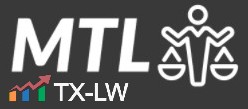One of the more popular ways to build wealth with real estate is to buy a house with a loan, move into it, fix it up, and then borrow against the higher value of the property to obtain a down payment for a second house.
The trick is often to add sweat equity to increase the value before getting a loan, so that the loan amount is higher.The first house then becomes a rental property, and the investor moves into the second house and repeats the process. This is the live-in-BRRR method (for “Buy, Rehab, Rent, Refinance, Repeat”).
While this can be a great way to build wealth, it also raises a number of tax complications. One complication is how to claim depreciation deductions on the house that is converted from personal to business use.
The recent Tax Court case Smith v. Commissioner, T.C. Memo. 2025-24 provides an opportunity to consider these rules–and how to avoid a few of the pitfalls associated with these rules.
Contents
Facts & Procedural History
This case invovles a taxpayer whose brother purchased a property in Los Angeles, California in 2002. The brother took out a loan to purchase the property and used it as his personal residence.
Then in 2011, the taxpayer assumed the outstanding balance on the loan. Several years later, the brother conveyed an interest in the property to the taxpayer as a tenant-in-common. According to the taxpayer, the property was first held for rent and actually rented in 2017.
The IRS conducted a tax audit and issued a Notice of Deficiency for the 2018 tax year in 2021. After the Notice of Deficiency was issued, the taxpayer filed his petition with the U.S. Tax Court to review the audit results.
Depreciation Deductions Under Section 167
Depreciation deductions allow taxpayers to recover the cost of major purchases. They do this by allowing a tax deduction for the costs to purchase or improve property. The cost to purchase is referred to as “tax basis” in tax lingo. These rules are set out in Section 167 of the tax code.
Section 167(a) allows taxpayers to claim a depreciation deduction for the exhaustion and wear and tear of property held for the production of income. This recognizes that income-producing assets generally decline in value over time due to use, and, as noted, allows property owners to recover their investment through annual deductions.
The concept seems simple enough: purchase a property, rent it out, and deduct a portion of your investment each year. But what happens when the property wasn’t originally purchased as a rental? This is where tax advise for real estate may be needed.
About the Depreciation Rules
To claim a depreciation deduction, a taxpayer must determine three essential elements:
- The property’s cost or other depreciable tax basis
- The property’s useful life
- Any previously allowed or allowable depreciation
The first element typically involves allocating the purchase price between the land (if any) and the building with its structural components. The portion allocated to land is not depreciable tax basis. While it remains part of the overall tax basis and can be recovered when selling the property, it cannot be recovered during ownership through depreciation deductions. This explains why the land-building allocation frequently becomes contentious with the IRS, as they often challenge taxpayers who assign higher values to buildings to secure larger deductions.
The second element relates to class life. The IRS has established comprehensive guidance and a structured framework for determining property’s useful life. For practical purposes, property is categorized into specific recovery periods under the Modified Accelerated Cost Recovery System (“MACRS”)—commonly 3, 5, 7, 10, 15, 20, 27.5, or 39 years. Residential rental real estate specifically has a designated recovery period of 27.5 years.
The third element—previously allowed or allowable depreciation—is straightforward. It represents the portion of tax basis already claimed as depreciation deductions. Importantly, this applies whether the depreciation was actually taken or not, as long as it could have been taken.
Converting Personal Property to Rental Use
This brings us to the personal property conversion rules for rental use.
When property that was not originally held for the production of income, i.e., that was personal use property, is subsequently converted to such use, special rules apply for determining the property’s tax basis.
Treasury Regulation § 1.167(g)-1 specifies that the basis for computing depreciation in such cases is the lesser of:
- The fair market value of the property at the time of conversion, or
- The adjusted basis of the property at the time of conversion
Notably, this rule prevents taxpayers from claiming inflated depreciation deductions based on appreciated property values that occurred during personal use. This is intended to ensure that only the actual economic investment in the property (limited by its fair market value at conversion) can be recovered through depreciation tax deductions.
This begs the question as to exactly when a conversion to rental use occurs. This is when the real estate is considered to be placed in service. Is it when the property is first offered for rent, when it’s first actually rented, or at some other point? While the tax court didn’t directly address this question, there are often disputes about whether property can be in a state of readiness to be considered held for rental or if it has to be actually rented. The courts have generally said a state of readiness is sufficient.
This tax court also did not get into the question of partial conversions, i.e., where some part of the property was converted to rental use, but the other part was not. The court did note that it was “unknown whether petitioner’s brother continued to live there at that time or since,” suggesting that the court may have thought that the taxpayer’s arrangement was a partial conversion.
Why Did the Depreciation Deduction Fail?
In this case, the court concluded that the taxpayer was not entitled to depreciation deductions. This was based on two findings made by the court.
First, the court found that the taxpayer failed to establish the fair market value of the rental property at the time of conversion in 2017. The taxpayer attempted to use real estate valuation sources available in 2024 to retroactively estimate the property’s value in 2017. The court didn’t accept this. The court characterized this approach as a “guestimate” that “hardly satisfies the precision required by section 167 and Treasury Regulation § 1.167(g)-1.”
Second, the court found that the taxpayer failed to establish his depreciable tax basis in the property. The circumstances surrounding his acquisition of an interest in the rental property from his brother left “too much uncertainty to allow for the necessary computation of the rental property’s basis.” The court didn’t elaborate on what specific documentation would have been sufficient, but the implication is that the taxpayer lacked records showing the original purchase price, improvements, and other adjustments to basis.
What Documentation Would Have Helped?
So what could the taxpayer have done differently in this case? For the fair market value, the taxpayer may have avoided this finding by establishing fair market value at conversion using:
- A professional appraisal conducted around the time of conversion
- Comparable sales data from the conversion period
- Property tax assessments from the relevant time period
- Insurance valuations contemporaneous with the conversion
It appears that this type of evidence was not presented to the court in this case.
For the adjusted basis, the taxpayer may have avoided this finding by establishing adjusted basis with documentation of the original purchase price, records of capital improvements made to the property, proof of the loan assumption and any consideration paid to the brother, or documentation of the legal arrangement creating the tenant-in-common interest. It appears that these records were also not presented to the court.Without establishing either the fair market value or his adjusted basis in the property at the time of conversion, the court held that the taxpayer couldn’t demonstrate that his depreciation calculation used the lesser of these two amounts as required by Treasury Regulation § 1.167(g)-1.
The Takeaway
This case helps explain what records one should keep when converting personal property to rental use. Evidence of the fair market value and adjusted tax basis of the property at the time of conversion should be kept. This is particularly true if the property is a joint interest that is co-owned by a family member. Real estate investors using the strategy of converting personal residences to rental properties should take note of these requirements to avoid a hefty tax bill and penalties and interest if the IRS audits and adjusts their depreciation deductions.
Watch Our Free On-Demand Webinar
In 40 minutes, we'll teach you how to survive an IRS audit.
We'll explain how the IRS conducts audits and how to manage and close the audit.


